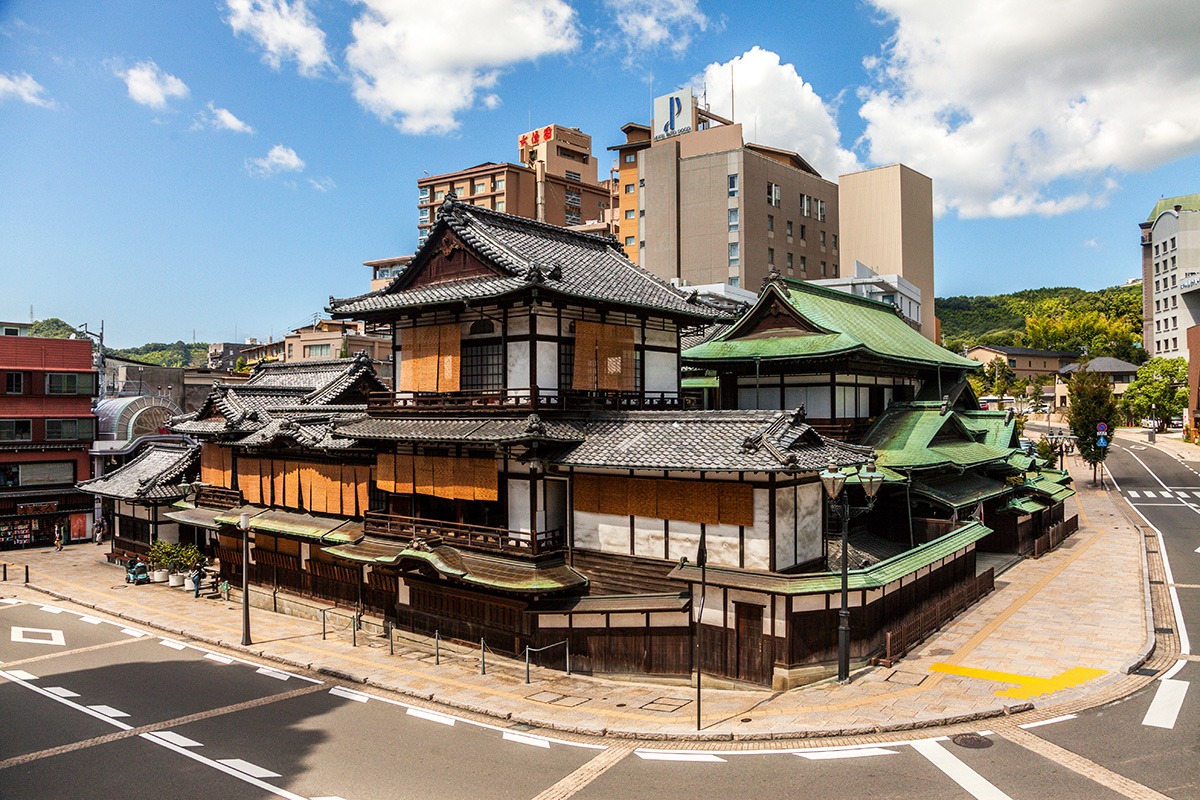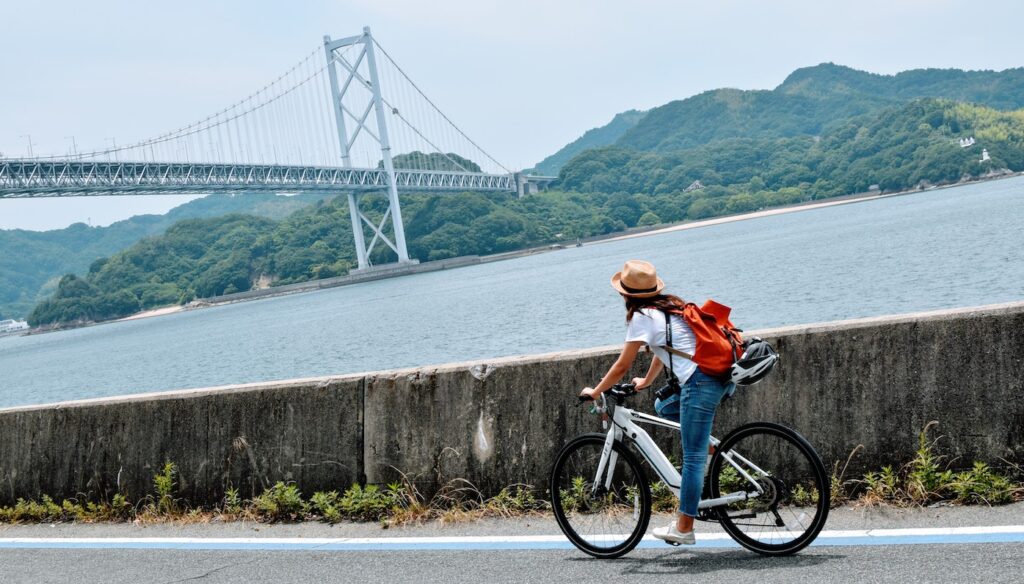The largest city on the island of Shikoku is Matsuyama, Japan, the prefectural capital of Ehime. With a population of 500,000, there are many things to do in Matsuyama to keep you busy. You can expect a rich and genuine Japanese experience here without having to cope with as many tourists as in Kyoto or Osaka because of its hilltop castle and hot springs.
The Japanese are also big fans of traveling to Matsuyama. The city serves as the primary backdrop for one of Japan’s most well-known novels, and the famed Dogo Onsen baths also serves as a major tourist attraction. From numerous locations throughout the city, Matsuyama offers calming views of the Seto Inland Sea.
You may discover all things to do in Matsuyama from the city’s rich culture, history, and traditions by visiting it. The top 5 things to do in Matsuyama are listed below, along with some useful travel advice so you can make the most of your stay there.
Top things to do in Matsuyama
MATSUYAMA CASTLE

Matsuyama Castle is a popular destination and one of the 12 post-feudal era castles still standing in Japan. The initial castle was built in the early 1600s, but after being struck by lightning, it was rebuilt once more in 1820.
There are real artifacts inside the three-story modern castle. It’s also one of the best places to go during cherry blossom season, with about 200 beautiful cherry trees encircling the castle.
From the 132-meter-high Mount Katsuyama’s craggy summit, you can see the city and the serene Seto Inland Sea from above. The castle is clearly visible from every location in the city, luring you to visit and take a closer look.
Every day, Matsuyama Castle is open to visitors from 9 am until 4:30 pm. Depending on the path you select, climbing the hill takes between 10 and 20 minutes. Alternatively, you can take a simple chairlift or ropeway.
DOGO ONSEN
Next on your list of things to do in Matsuyama is Dogo Onsen. Dogo has a lengthy and fascinating past as one of Japan’s first hot springs. Even the Japanese author Natsume Soseki mentioned the onsen in his 1906 book Botchan. The exterior of Dogo’s public bathhouse served as inspiration for Yubaba’s bathhouse in Spirited Away.
Despite the contemporary development of the area around Matsuyama, Dogo is still a tranquil, soothing setting. In reality, you will see a lot of visitors wandering the streets in yukata robes.

The onsen is the subject of two major legends. The first tells the tale of a wounded egret bird that recovered its health by taking daily baths in the hot water and eventually took flight. The second depicts Okuninushi no Mikoto, a little god who likewise recovered after soaking in the water. He danced on a stone in the hot spring, thrilled with his new strength, leaving his mark.
The main wooden bathhouse, constructed in 1894, is a three-story labyrinth of rooms and stairs. The Bath of the Gods and the Bath of the Spirits are the two primary public baths that you can use. You can reserve a certain private room in advance if you’d like.
Enjoy a snack and a cup of tea that is customarily heated with coal as you relax. You can peruse a modest display with historical relics on the second level of the main building.
THE BOTCHAN TRAIN

A copy of the original Botchan steam train from 1888 is the well-known Botchan Train. Locals refer to it as the Botchan Ressa, after the protagonist of the well-known book Botchan by Soseki Natsume.
The rebuilt diesel locomotive travels from central Matsuyama to Dogo Onsen, providing tourists with a pleasurable, scenic journey and locals with a taste of nostalgia. The train drivers dress historically, mimicking the standard attire of the late 1800s. Adults can take a ride for 800 yen.
There is a museum right adjacent to the station if you want to understand a little more about the history of the railway. The access is through the Starbucks just next door, which is confusing.
Historic Walking Tour of Uchiko Town
Return to JR Iyo-zu Station after Gary Sans and take a 10-minute train trip to JR Uchiko Station. Uchiko is a historic town that has managed to preserve its traditional townscape by being named one of Japan’s “Important Preservation Districts for Groups of Historic Buildings” and by the people actively participating in preserving the history and culture of the region.
These opulent and refined homes were built as a result of the town’s success as a vegetable wax manufacturing hub throughout the Edo (1603–1887) and Meiji (1868–1912) eras. The berries of the sumac tree were used to produce the local wax.
You can take a self-guided walking tour of the area or engage a volunteer English-speaking tour guide (one week ahead notice is preferred) to take you to some of the local attractions.

Among the attractions of Uchiko are:
Uchiko-za Theatre
The primary entertainment center for the community, Uchiko-za, which opened in 1916, featured kabuki and bunraku puppet shows. The frequency of performances dwindled over time, and its deteriorating facade made it vulnerable to demolition.
However, the structure was repaired and reopened as a theater in 1985 because of the neighborhood’s preservation campaign. It has been recognized as a National Important Cultural Asset and is one of only 20 remaining traditional theaters in Japan. Uchiko-za is often referred to as a “living theater” because it continues to host traditional performances today.
Commercial & Domestic Life Museum
To gain a flavor of how Japanese merchants lived during the Taish period, visit this traditional merchant house turned museum (1912-1926).
Honorhaga Residence
Another “National Important Cultural Asset” that belonged to a wealthy wax merchant is the Honhaga Residence.
Honhaga Residence stands out even among the other outstanding structures in the town as a prime example of traditional Japanese architecture during the height of wax manufacturing.
The Japanese Wax Museum and Kamihaga Residence
Another “National Important Cultural Asset” and mansion made wealthy by Japanese wax industry, this one. The house was previously a place of employment, and the museum describes the wax-making procedure.
Cycling the Shimanami Kaido
The Shimanami Kaido, often known as the “Shimanami Sea Road,” is a road that spans six islands in the Seto Inland Sea to connect Ehime and Hiroshima.
It is thought to be the only sea crossing in the entire globe that has a bicycle route, making it a desirable location for both recreational and competitive riders. Cycling is a fantastic way to enjoy the energizing view and cool sea wind. The 60km can be biked in its entirety, but you can also decide to only ride parts of it. We rode around 15 kilometers (km) from Sunrise Itoyama in Imabari to Oshima and back.
On Oshima, there is a rest area with a restaurant that serves standard lunch menus. As an alternative, you can pick your own fresh vegetables and fish to barbecue on the BBQs. Six flavors are available at the soft serve ice cream restaurant (“soft cream”). I chose the mikan flavor because we were visiting Ehime, and I wasn’t disappointed!
At Sunrise Itoyama, bicycles may be rented for for 1000 yen per day. From Imabari Station, it takes a taxi roughly 15 minutes to go to Sunrise Itoyama.
Conclusion
Japanese visitors have been flocking to Matsuyama for generations, whether they are pilgrims trudging between temples or relaxation seekers unwinding in onsens, despite the fact that it is not overrun by foreign tourists. But Matsuyama’s spectacular castle, possibly the best maintained in the nation, dwarfs even the Dogo Onsen Honkan. So put on your walking boots to ascend the tower or your wooden geta sandals to explore things to do in Matsuyama at your leisure.
Please read: http://animagplus.net/2022/07/most-safe-investments-with-high-returns.html

